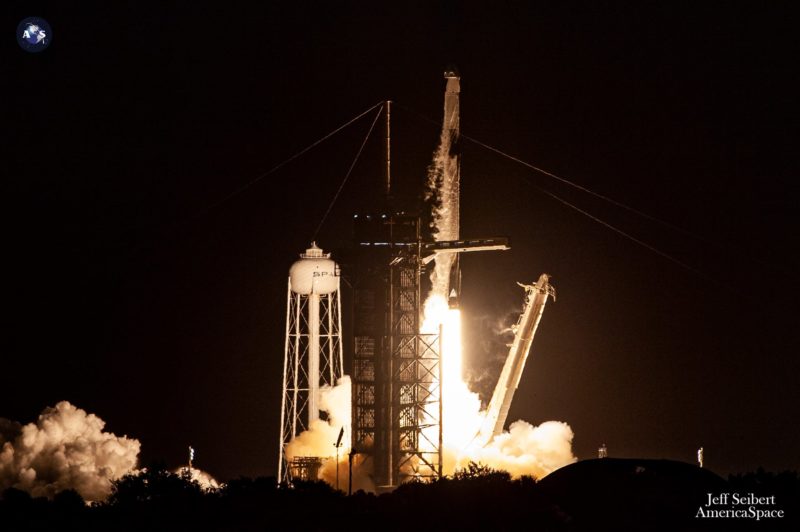
The democratization of human spaceflight drew one step closer Wednesday evening, when SpaceX triumphantly launched the first non-professional, “all-civilian” team of astronauts into low-Earth orbit. Billionaire businessmen and pilot Jared Isaacman and his Inspiration4 crewmates Sian Proctor, Hayley Arceneaux and Chris Sembroski roared into the night at 8:02:56 p.m. EDT from historic Pad 39A at the Kennedy Space Center (KSC) in Florida.
Their previously-flown Falcon 9 booster lifted the veteran Dragon Resilience into low-Earth orbit for a three-to-five-day flight which will achieve an altitude unseen by a piloted vehicle since the days of the Hubble Space Telescope (HST) servicing missions.
As detailed in AmericaSpace’s preview story, Inspiration4 morphed from concept to reality in a matter of months. Early in February, SpaceX announced that Isaacman, a one-time Space Camp graduate and later founder of Allentown, Penn.-based payments processing firm Shift4 Payments, would command the mission and donate the remaining three seats—each valued around $50 million—“to individuals from the general public”.

With strong emphasis upon raising $200 million for St. Jude Children’s Research Hospital in Memphis, Tenn., the first selectee was Arceneaux, a physician’s assistant and former patient at the hospital. Arceneaux had been treated there for bone cancer as a child.
The Inspiration4 crew was complete by late March, when Isaacman and Arceneaux were joined by geologist and science communicator Proctor and Air Force veteran and Lockheed Martin data engineer Sembroski. Each crew member represents one of four mission “pillars”: Isaacman as “leadership”, Arceneaux “hope”, Proctor “prosperity” and Sembroski “generosity”.

Over the next five months, they trained across the United States in classrooms, simulators, high-performance jets, centrifuge facilities and even hiked to Camp Muir on the slopes of Mount Rainier in Washington State.
Although “civilians”—in the sense of non-military personnel, tourists or Spaceflight Participants (SFPs)—have flown aboard multiple U.S. and Russian spacecraft over the last several decades, each included at least one “professional” astronaut or cosmonaut.
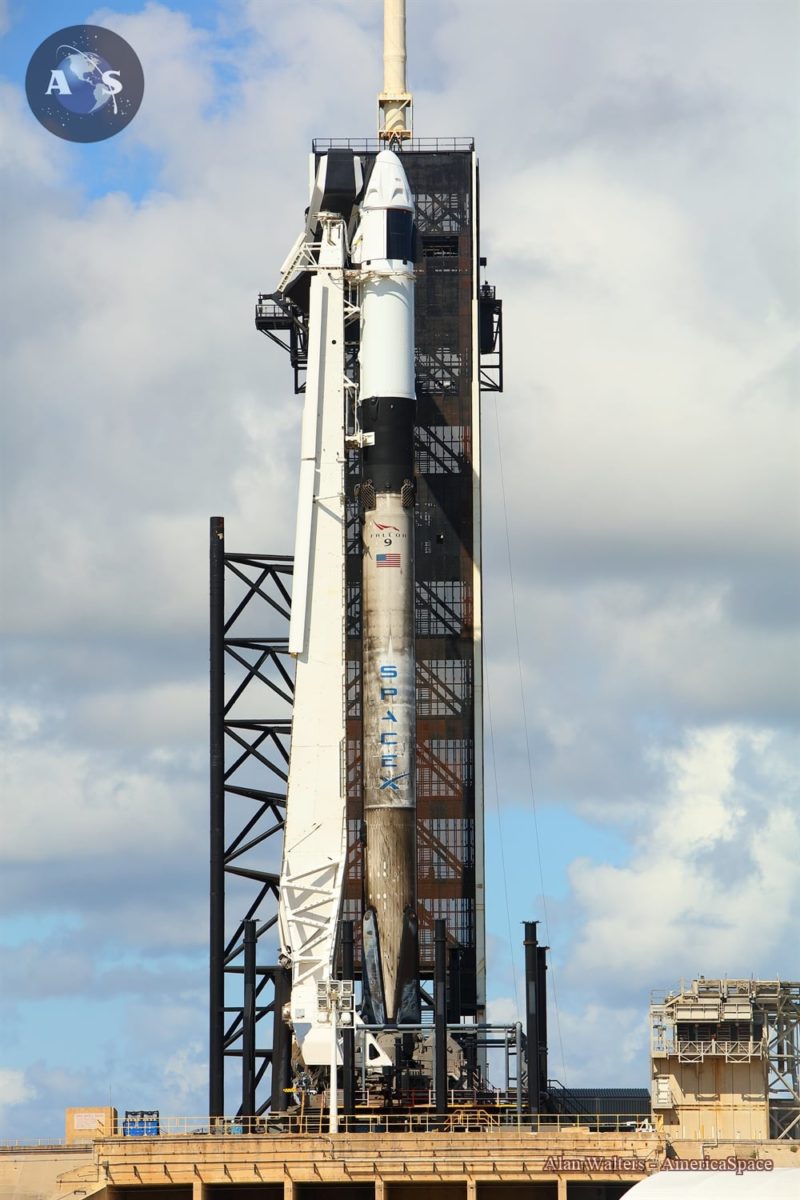
The four crew members of Inspiration4, with their astonishing life-stories and accomplishments, are about as “ordinary” as extraordinary people can possibly be.
Processing of both vehicles for Inspiration4—the Falcon 9 booster and Dragon Resilience—have been ongoing for several months. The latter wrapped up her first voyage in May, bringing Crew-1 astronauts Mike Hopkins, Victor Glover, Shannon Walker and Soichi Noguchi home to the Gulf of Mexico after 167 days in orbit.
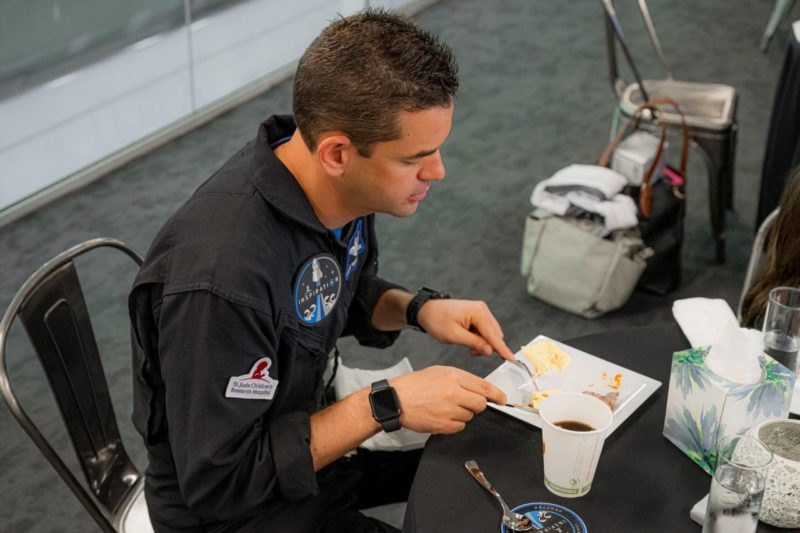
She was rapidly reprocessed in just 136 days for her second mission, during which her docking adapter was replaced with a dome-like cupola viewing port. Developed, constructed and certified for flight in only six months, the cupola should furnish Isaacman, Proctor, Arceneaux and Sembroski spectacular views of the Home Planet and space.
Meanwhile, the core stage of the Falcon 9 had logged two prior missions before tonight. Tailnumbered “B1062”, she supported the launches of the fourth and fifth Block III Global Positioning System (GPS) satellites in November 2020 and last June.
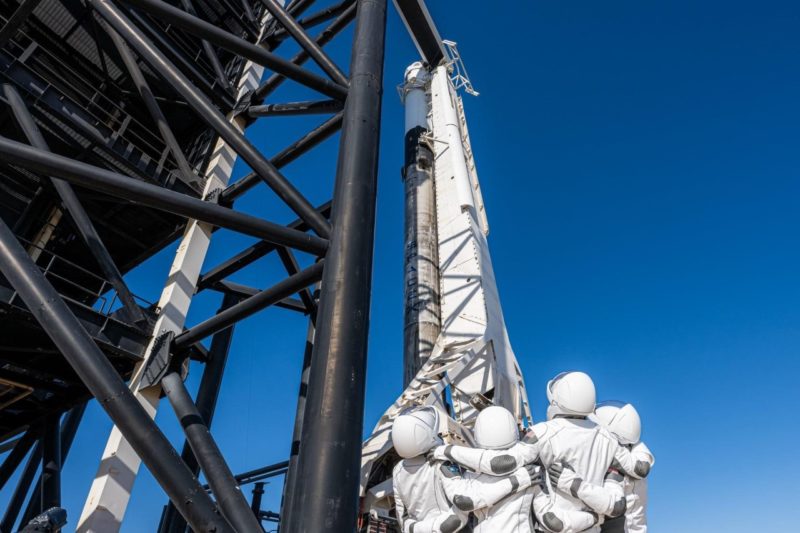
Earlier this month, B1062 and her sparkling second stage were paired with Dragon Resilience and rolled to Pad 39A last Sunday. A Static Fire Test of the nine Merlin 1D+ first-stage engines took place on Monday, ahead of a smooth Launch Readiness Review (LRR) on Tuesday.
Weather conditions for Wednesday night’s opening launch attempt indicated that Mother Nature was equally in favor of getting Inspiration4 airborne. Forecasts gradually improved from 70 percent to 90 percent by launch morning.
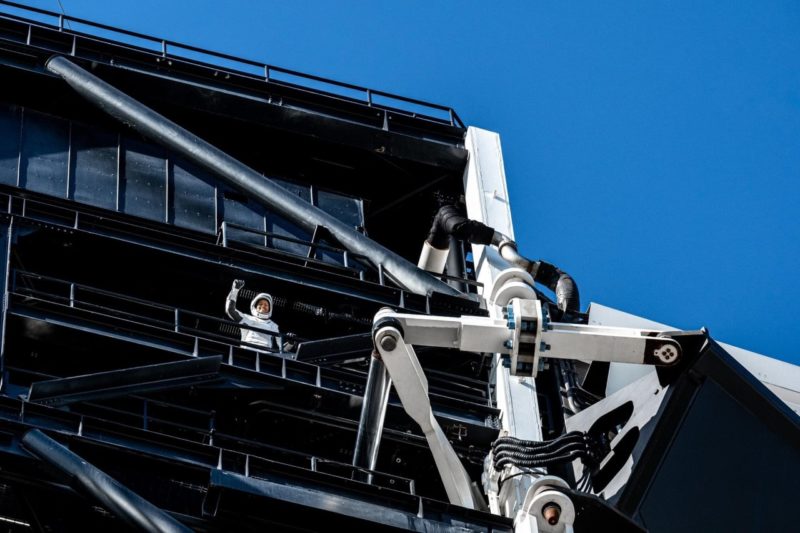
Although concerns about the lingering presence of Tropical Storm Nicholas over Louisiana remained acute, elevated winds and enhanced precipitation were expected to remain south and east of the Falcon 9’s ascent corridor during Wednesday’s five-hour launch window.
“The primary launch weather concerns are Flight Through Precipitation with coastal showers and the Anvil Cloud Rule associated with inland storms,” noted the 45th Weather Squadron at Patrick Space Force Base on Wednesday morning.
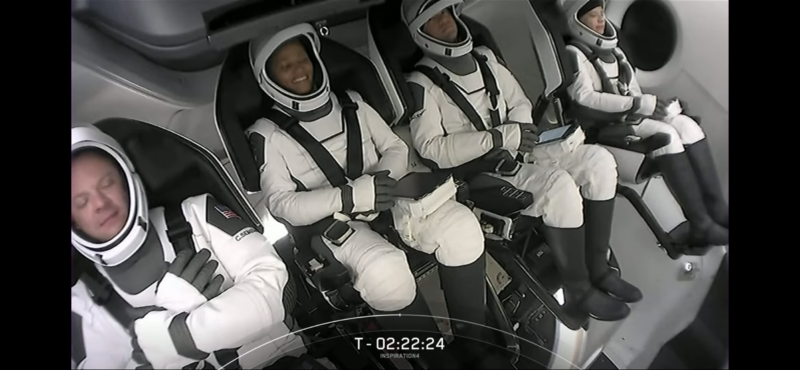
Shortly before 4 p.m. EDT, the four astronauts emerged from their quarters into a humming, cheering throng of well-wishers, before taking their seats in a pair of Tesla Model X cars for the ride to the pad.
Having donned their customized SpaceX launch and entry suits, Isaacman, Proctor, Arceneaux and Sembroski were ensconced into their seats aboard Dragon Resilience about 2.5 hours before liftoff.
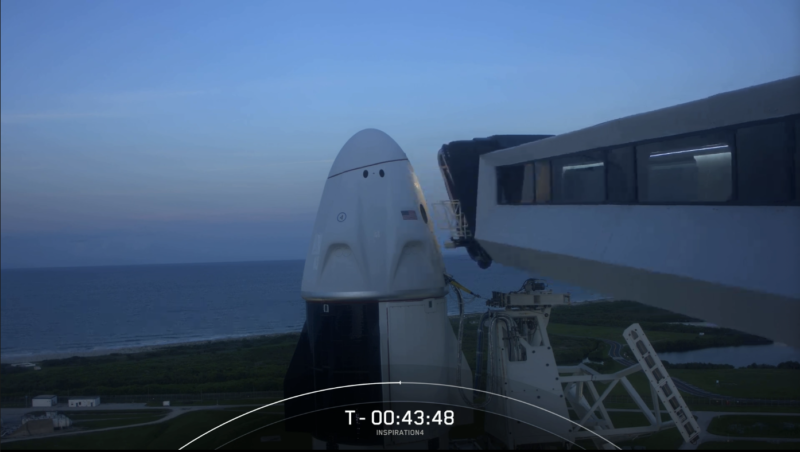
This was followed in short order when Crew Operations and Resource Engineer (CORE) Sarah Gillis—seated at her console in the SpaceX flight control room in Hawthorne, Calif.—pressed through standard communications checks. Next up, the crew’s seats were rotated into their upright configuration to afford them better access to their displays and instrumentation.
During Inspiration4, Dragon Resilience achieved a peak apogee of around 363 miles (585 km) above the Home Planet. That makes this mission the highest-orbiting human spaceflight since STS-125, the final Hubble servicing flight, way back in May 2009.
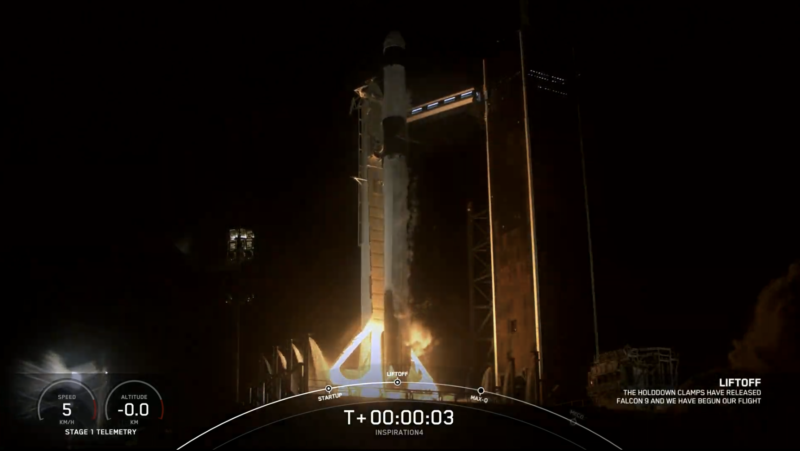
By chance, Megan McArthur—one of the NASA astronauts from STS-125—is currently aboard the International Space Station (ISS) as a member of Expedition 65. Earlier today, she shared her thoughts via a touching tweet from the orbital outpost.
“We’re excited for this historic event and we’ll be cheering on Inspiration4 from @Space_Station,” McArthur wrote. “It’s nice to see the neighborhood expanding.”
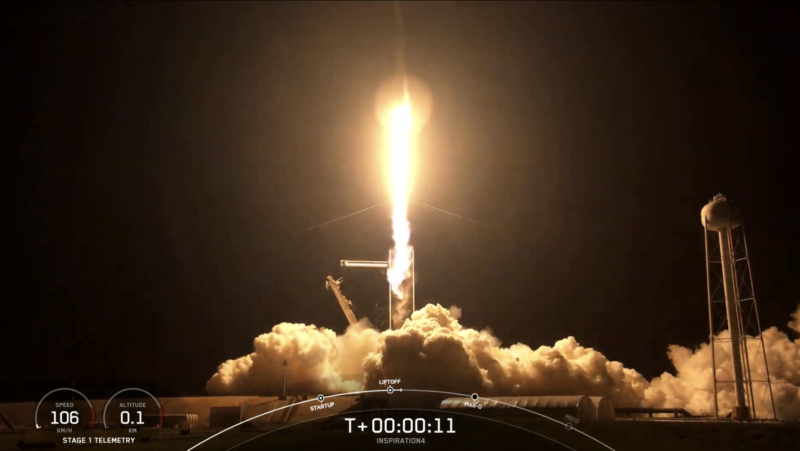
And her Expedition 65 crewmate, Frenchman Thomas Pesquet added a few comments of his own about the significance of the mission. “No matter if you’re a professional or not,” tweeted France’s most experienced astronaut and most seasoned spacewalker, “when you get strapped to a rocket and launch into space, we have something in common.”
Teams departed the launch pad’s blast danger area shortly after 7 p.m. EDT and at T-45 minutes the SpaceX Launch Director issued a definitive “Go” to begin loading liquid oxygen and a highly refined form of rocket-grade kerosene (known as “RP-1”) aboard the Falcon 9.
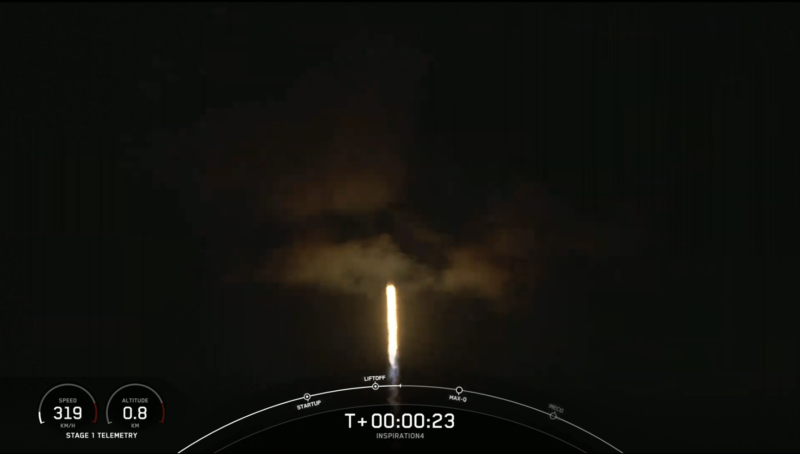
Shortly thereafter, the Crew Access Arm (CAA) was retracted away from the stack and the Launch Escape System (LES) was armed, its eight powerful SuperDraco thrusters in Dragon Resilience’s external sidewalls ready to effect a rapid abort in an emergency. Isaacman, Proctor, Arceneaux and Sembroski were instructed to close their visors and fueling commenced on time at T-35 minutes.
As the minutes ticked inside the Terminal Count, Gillis radioed a message of good luck and godspeed to Isaacman and his crew. Inside the cabin, the four astronauts could been seen signaling their thanks with a unified thumbs-up.
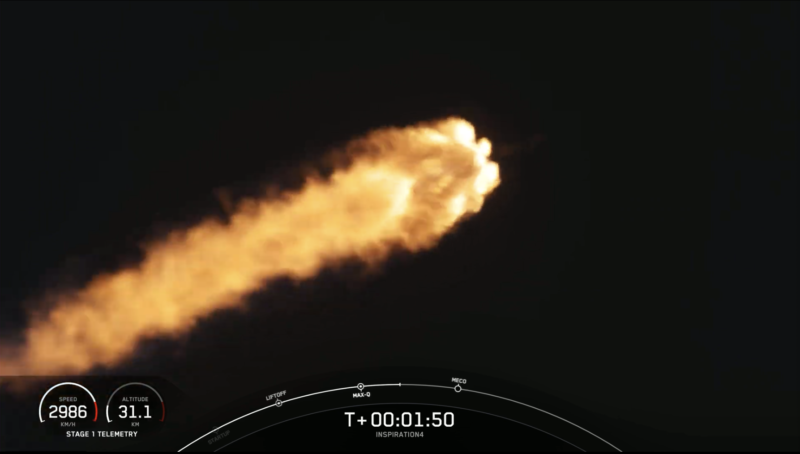
With all personnel having declared themselves “Go”, Dragon Resilience transitioned to Internal Power at T-5 minutes as the countdown headed deep into the Terminal Count.
“Falcon 9 is in startup; Dragon is in countdown” came the dual announcements at T-60 seconds, with the Launch Director declaring “Go for Launch” a few seconds later.
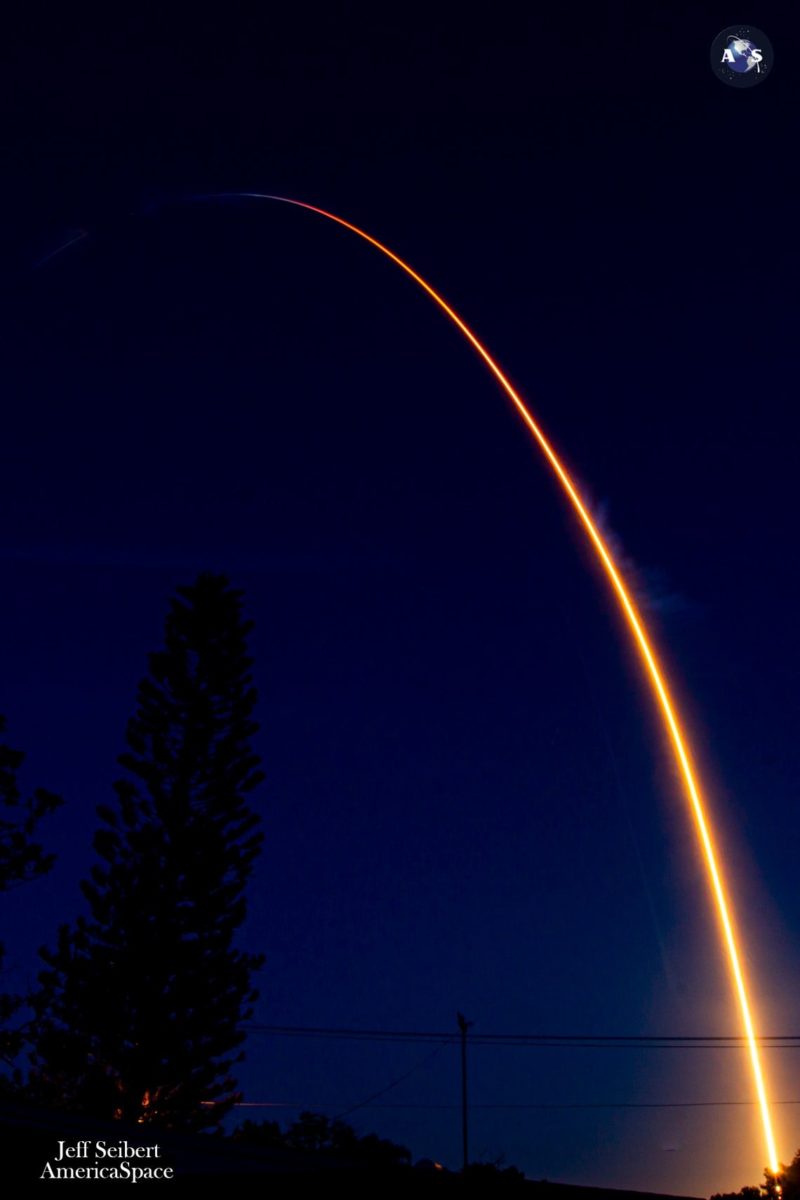
Isaacman responded with typical gusto: “Punch it, SpaceX!” All four astronauts briefly clasped hands.
Ignition of the nine Merlin 1D+ engines commenced at T-3 seconds, with the Falcon 9’s computers monitoring their performance closely as they ramped up to 1.5 million pounds (680,000 kg) of thrust.
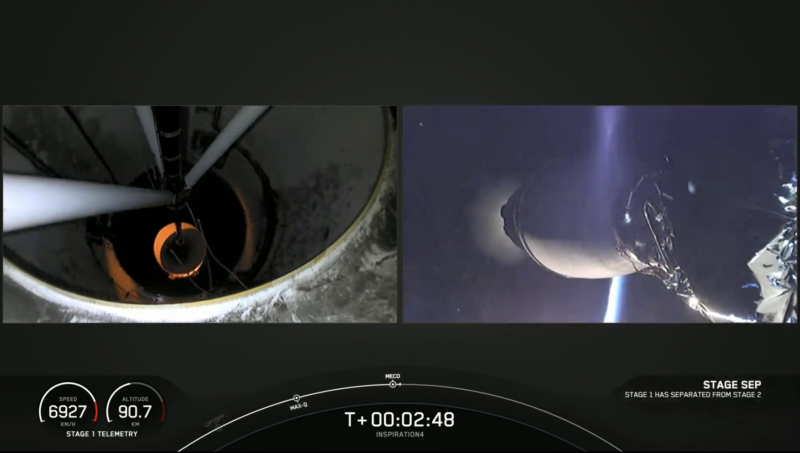
Liftoff at 8:02:56 p.m. EDT momentarily lit the nighttime Florida sky as a human-made sun rose from Earth and the dawn of a new era began.
Ascent was as perfect as could be expected, as B1062 powered smoothly through the first 2.5 minutes of flight. Its engines shut down crisply and the trusty core stage then separated from the stack to commence its descent to a smooth touchdown on the deck of the Autonomous Spaceport Drone Ship (ASDS), “Just Read the Instructions”, situated offshore in the Atlantic Ocean.
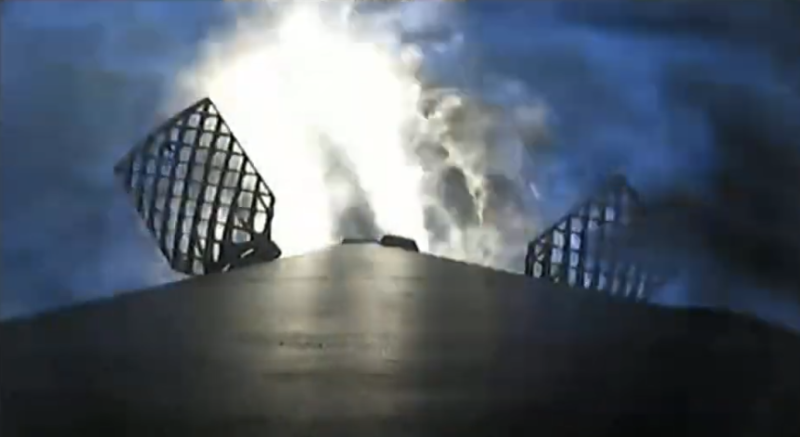
Meanwhile, the second stage’s Merlin 1D+ Vacuum engine picked up the baton, burning hot and hard for six minutes to inject Dragon Resilience into a preliminary orbit. Twelve minutes after launch, the spacecraft separated on time from the second stage and drifted away into the inky blackness.
And 60 seconds later, Dragon Resilience’s nose cone opened to reveal the cupola. A tiny toy Golden Retriever—symbolic of St. Jude’s—started floating in midair as the Inspiration4 weightlessness indicator. Two “phasing burns” of the ship’s thrusters established the Inspiration4 team in a circular orbit of 363 miles (585 km), SpaceX’s highest to date for a Crew Dragon.
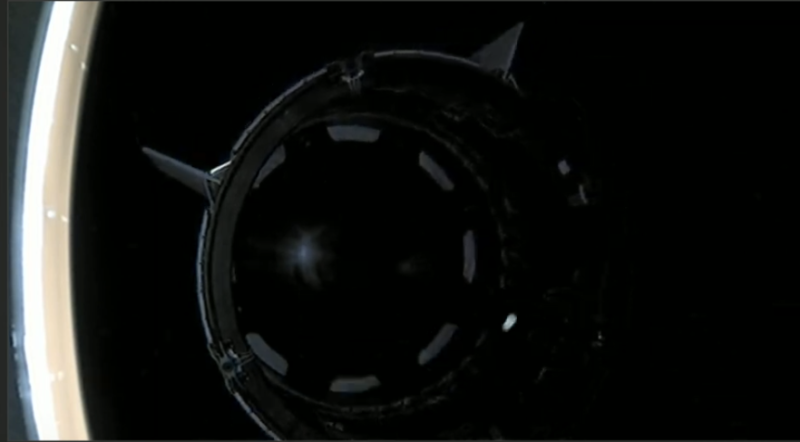
Current estimates are for Isaacman, Proctor, Arceneaux and Sembroski to spend three to five days in space, with multiple landing locations off the Florida coastline, including Cape Canaveral, Daytona, Jacksonville, Panama City, Pensacola, Tallahassee and Tampa.
But for now, the world can do little else but marvel at history in the making. “Few have come before and many are about to follow,” said Isaacman, shortly after orbital insertion. “The door is open now. It’s pretty incredible.”




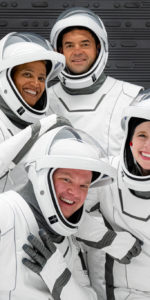
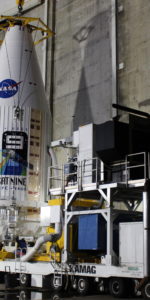
12 Comments
12 Pings & Trackbacks
Pingback:Crew-3 Discusses Upcoming Mission, Names New Dragon ‘Endurance’ « AmericaSpace
Pingback:Crew-3 Discusses Upcoming Mission, Names New Dragon ‘Endurance’
Pingback:Crew-3 Arrives in Florida, Readies for Halloween Launch to Space Station – AmericaSpace
Pingback:Crew-3 Aims for NET Saturday Launch, Daylong Trek to Space Station – AmericaSpace
Pingback:Crew-3 Goals for NET Saturday Launch, Daylong Trek to House Station – AmericaSpace - Technology News
Pingback:Watkins Assigned to Crew-4 Mission, As SLS Prepares to Roll – AmericaSpace
Pingback:SpaceX Launches DART Mission on Ten-Month Impact Trek to Binary Asteroid – AmericaSpace
Pingback:Record-Breaking Falcon 9 Launches, Pushes 2021’s Starlink Tally Past 900 – AmericaSpace
Pingback:SpaceX Kicks Off First of Three Launches in Three Days – AmericaSpace
Pingback:SpaceX Launches Second Mission in 15 Hours, CRS-24 Up Next – AmericaSpace
Pingback:CRS-24 Dragon Launches, Heads to Space Station – AmericaSpace
Pingback:Pad 39A Supports First U.S. Launch of 2022, Next Starlink Batch Lifted to Low Orbit – AmericaSpace